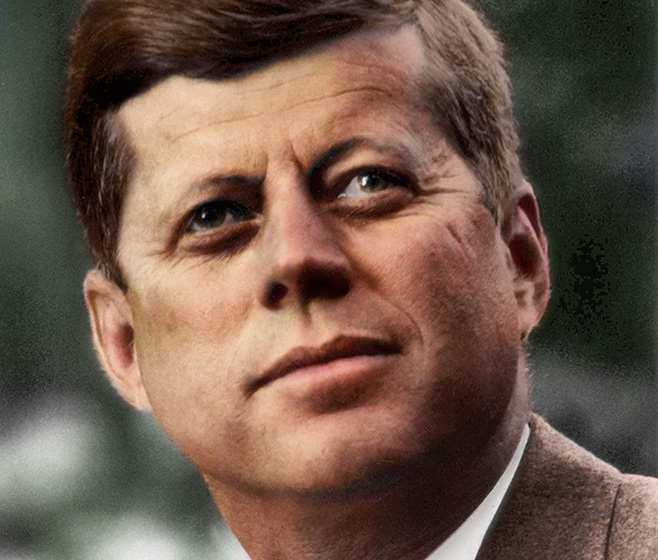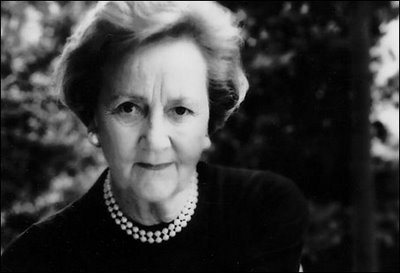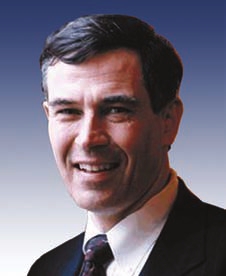Alex Constantine - December 24, 2012
" ... This book is so bad – in content and style – that it deserves a close reading, primarily because it is the type of salacious and deceptive propaganda eagerly devoured by so many Americans. It is at or near the top of every best-seller list, a fact that should send shivers down the spine of any literate and historically aware person. ... "
December 3, 2012
President John Fitzgerald Kennedy was brutally and very publicly assassinated forty-nine years ago on November 22, 1963, though you wouldn’t know it from reading this specious book, Killing Kennedy:The End of Camelot (Henry Holt and Co.,2012) , by Bill O’Reilly. Once closely read, however, it becomes apparent that the title is apt and that Fox Television’s self-described “punk” O’Reilly’s aim is to assassinate JFK’s character today and especially to obfuscate the truth of his murder. This is the Warren Commission’s cover story repackaged for a new generation, and like its predecessor it is patently absurd.
Samuel Johnson once said, “You can abuse a tragedy, but you can’t write one.” O’Reilly has accomplished this abusive feat by writing what he calls “history that is fun to read,” a perverse way of describing the murder of a uniquely courageous president who was intent on confronting the military-industrial- intelligence complex and paid the price.
This book is so bad – in content and style – that it deserves a close reading, primarily because it is the type of salacious and deceptive propaganda eagerly devoured by so many Americans. It is at or near the top of every best-seller list, a fact that should send shivers down the spine of any literate and historically aware person. The tragedy of this book is that so many will read it and be deluded, or in the popular parlance – get punked.
First, very little of this book (approximately 20 %) is devoted to the assassination of Kennedy, and that as an afterthought. The majority is a histrionic rehashing of the years leading up to the killing. We learn many highly significant things: that JFK was an “easily likable man’s man”; that he “is naked and on-schedule” in “the indoor pool”; that this nakedness “stems from his notion of manliness”; that “real men do the breaststroke au natural, and that’s that”; that “Kennedy’s fixation on movies rivals his other favorite recreational pursuit: sex”; that during the Bay of Pigs invasion he spends the day “wallowing in grief”; that Jackie Kennedy “goes through life…feigning ignorance”; that in Kennedy’s relationship with his wife “there was little attempt at foreplay,” that “the president made love to Jackie as if it were a duty”; that “he liked a cigar and a daiquiri or two”; that he “can be just as cold-blooded” as his brother, Robert; that “the president is impotent” – or so thinks Nikita Khrushchev; that JFK is “an adrenaline junkie, relishing the rush of competing for power”; and – but I am getting ahead of myself – that when Marina Oswald “came to bed, her body warm and smelling like soap from a late-night bath, he (Lee) pretended to be asleep.”
This is the killing of Kennedy, O’Reilly’s profundity at work.
As for the style of the writing and the presumptiveness of the author, one would more readily expect the book to be at the top, not of the non-fiction best-seller list, but of the fiction list, perhaps romance fiction. In a note of reassurance to readers, O’Reilly writes, “please know that this is a fact-based book,” that it “is completely a work of non-fiction. It’s all true.”
So let’s count a few of his true facts of the imaginary sort, the kinds of things only an omniscient author could know. In Minsk, Russia, Oswald meets his future wife who “is reluctant to smile because of her bad teeth.” O’Reilly tells us that Kennedy “absentmindedly buttons his coat”; that Oswald “festers in a quiet rage.” The mind-reader writes that “when Jackie thinks of Camelot, she focuses on the final act of the play”; that JFK’s “thoughts are never far from another ‘Churchill’”; that Oswald “dreams of living in the palm tree fringed workers’ paradise of Cuba”; that “the First Lady looks visibly exhausted as she primps before the mirror”; that Oswald “today is easily distracted.” All true, of course, fact-based.
O’Reilly matches this mind-reading ability, this “fact-based” reality, with a breathless present-tense style and convoluted syntax worthy of a potboiler. Is, was, has been jostle throughout the text, but is – with its “we are there, aren’t we” presumption – predominates. One can almost hear the television narrator working with this script sometime next year as the fiftieth anniversary of the assassination approaches and the media propaganda machine goes into high gear. He writes of Jackie: “Her future is gazing at her intently with those beautiful greenish-grey eyes of his”; of Marina Oswald: “Because Lee Harvey will not be around to watch Audrey Marina Rachel Oswald grow up” (yes, that’s the “sentence”); of Oswald : “Oswald can see every strand [of hair] through his scope.”
But perhaps this is O’Reilly at his best. He writes of JFK:
The president stands less than three feet away, paying no attention whatsoever to his wife. He gazes at a dark-haired beauty half his age named Lisa Gherardini. She is blessed with lips that are full and red, contrasting seductively with her smooth olive skin. Her smile is coy. The plunging neckline of her dress hints at an ample bosom. She bears the faintest of resemblances to the First Lady…. Surely John Kennedy can be allowed the minor indiscretion of appreciating this lovely twentysomething.
Turn on the laugh meter. The vixen in question is the Mona Lisa at an unveiling at the National Gallery of Art. Isn’t Killing Kennedy a lot of fun?
As for the actual assassination of JFK, this book could have been written in the late 1960s when O’Reilly was in college. Its primary source is the Warren Commission Report. It’s as though O’Reilly is stuck in time, for his awareness of the enormous body of ongoing research into the killing is either non-existent or purposely avoided. If we give him the benefit of the doubt, he’s damned either way: ignorant of the vast amount of research, including government documents released through the Kennedy Assassination Records Review Board, or complicit in avoiding new findings. Take your pick.
O’Reilly’s method is simplistically deceptive. As he told USA Today (October 2, 2012), this writing is “No pinheaded stuff, just roar through!” And roar he does. Through the first four-fifths of the book, he intersperses short snippets on Lee Harvey Oswald with background on Kennedy’s time in office. These snippets prime the reader for the obvious conclusion that Oswald killed Kennedy just as the Warren Commission claimed.
So on page 15 we read that Oswald was a “crack shot in the military,” an assertion contradicted by manifold evidence, yet a key to O’Reilly’s conclusion. We never learn from these snippets how an alleged traitor to the United States, a defector who told the Soviets he would disclose state secrets, is given his passport back by the U.S. State Department that loans him money so he can return to Hoboken, New Jersey after three years in the Soviet Union. We do learn the important fact that Hoboken is Frank Sinatra’s hometown, but we don’t learn the name or the intelligence connections of the man who met him at the dock and facilitated his re-entry into the country that he had renounced.
We do learn that Oswald “fumes,” that he is “haughty, arrogant … and insolent,” that he is a liar. We do learn that after going to Fort Worth, Texas with his Russian wife Marina and their child, Oswald is befriended by a Russian named George de Mohrenschildt, a man who “may have CIA connections.” We aren’t told that he did, in fact, have such connections by his own admittance. We are told that Oswald “festers in quiet rage,” but O’Reilly doesn’t inform us that de Mohrenschildt, whose father was a czarist official, urges Oswald to move to Dallas where he helps him get at a job at Jaggers-Chiles-Stovall, a graphic arts company that does classified work relating to Cuba and U-2 spy flights for the U.S. Army Map Service. Thus we don’t learn that “defector” Oswald, with a little help from a serendipitously found new friend, has defied basic government security barriers. But then again, O’Reilly fails to mention that Oswald had crypto security clearance (higher than top secret) in the Marines and that he was based at Atsugi Air Force Base in Japan, the CIA’s main operational base in the Far East for top-secret U-2 spy flights over the Soviet Union. (But since O’Reilly’s main source is the Warren Commission that suppressed the fact of Oswald’s crypto clearance, he wouldn’t, presumedly, know that.)
We do learn that by 1963 Oswald is getting angrier, and is having fights with his wife, and decides on April 10, 1963 that “it’s time to kill someone.” We learn once again that he “can shoot extremely well,” but that when he allegedly attempts to assassinate extreme right-wing Major General Ted Walker he misses completely. O’Reilly tells us that Oswald “wanted to be a hero in the eyes of the Communist Party,” but now he feels like a failure and his wife is mad at him. We keep learning that he’s getting angrier by the day, that he feels like a failed man, and that he’s quite nifty with a rifle. The combustible nature of these revelations is surely foreboding.
From another snippet we learn that the Oswald’s move to New Orleans where Oswald quickly gets a job at the Reilly Coffee Company. We are not told that the owner, William B. Reilly, worked for the CIA and was a wealthy supporter of CIA anti-Castro efforts and that the Reilly Coffee Company was located at the center of the U.S. intelligence community in New Orleans. We do learn that Oswald’s rage is increasing – from his reading. We do learn, that despite his employment, he is a “true Communist” and, of course, “an avowed atheist.” We don’t learn that he works with Guy Bannister, a former FBI agent, whose office is nearby and who works with the CIA in all sorts of anti- Castro activities.
O’Reilly informs us that Marina moves back to the Dallas area to the home of her friend, Ruth Paine, but he fails to mention why Mrs. Paine is so solicitous of the Oswalds. Nor does he mention the insignificant fact that Ruth Paine’s sister worked for the CIA; that Ruth Paine had just been visiting her sister in Virginia when she drove to New Orleans to drive Marina and her child back to her home; and that Paine’s mother was connected to Allen Dulles, the former CIA Director whom Kennedy fired after the Bay of Pigs and who would later become a key member of the Warren Commission. But we learn that “thanks to a kindly reference from Ruth Paine,” Lee lands a job at the Texas School Book Depository where he starts work on October 16, 1963, just in the nick of time. Lucky Lee has such good friends.
And on and on we learn and don’t learn from these snippets. Until we learn where all this is leading, as if we didn’t know: the angry Commie atheist Lee Harvey Oswald, because his wife is frustrated with him and won’t take him back, despite his begging, “will be left with no choice,” he will have to kill President Kennedy from the sixth floor of the Texas School Book Depository.
This is O’Reilly’s idea of “history that is fun to read.” Perhaps it’s the serendipity of it all, the odd coincidences never mentioned, or the sexual frissson of the frustrated man turned crazed killer. But “it’s all true,” O’Reilly tells.
What he doesn’t need to tell us is that this book totally disregards decades of research that proves his facile thesis absurd. It’s as though there never was the Church Committee, the Select Committee on Assassinations of the House of Representatives (HSCA), the Kennedy Assassination Record Review Board, no Jim Douglass’s JFK and the Unspeakable, no Gaeton Fonzi, no Peter Dale Scott, no Jim Garrison, no Mark Lane, no Gerald Mcknight, no Sylvia Meagher, no John Newman, no Russ Baker, no Jim DiEugenio, to name but a few of those who have contributed great work. The list of deeply documented, exceptional research is long indeed. Nowhere in this book do we learn of David Atlee Philips, Antonio Veciana, Abraham Bolton, Silvia Otio, David Morales, David Ferrie, Guy Bannister, Howard Hunt, JFK’s secret correspondence via Pope John XXIII and Norman Cousins with Nikita Khruschev, et al. The superficiality of this book is astounding.
O’Reilly would call me a “pinhead,” an academic who cares about facts and sources; such a person must be jealous of his popularity and money. So be it. He is a best-selling author. But how is it possible to be jealous of someone who doesn’t know facts from fiction and who disregards the best scholarship on JFK’s brutal murder?
How are we to explain the popularity of such a terrible book? The great cultural anthropologist, Ernest Becker, in his Pulitzer Prize winning masterpiece, The Denial of Death, explained it perfectly. People who are afraid of death and the loss of their cultural illusions that support their world views are particularly attracted to the supposed “unconflicted personality,” the one who will tell them this is that – end of story, the one who shows no doubt. O’Reilly is their man. As he told USA Today (October 2, 2012), “I know that Oswald killed Kennedy.”
There is a bit of an ocular problem with his conclusion, however. In an explanation of his sources, O’Reilly writes of the famous Zapruder film, that “we watched it time after time to understand the sequence of events, and it never got less horrific – nor did the outcome ever change.” (It’s good to be reassured that the outcome never changed, which would be a neat trick.) If this is true, then O’Reilly and his co-author Martin Dugard might consider visiting an ophthalmologist. For anyone with eyes to see who watches that film knows instantly that JFK was shot from the front and that the front right side of his head was blown apart and he was jolted back. Jackie jumps on the trunk to retrieve part of his brain and skull. Our authors miss this, time after time, for they have their man Oswald, and he’s somewhere behind, running.





